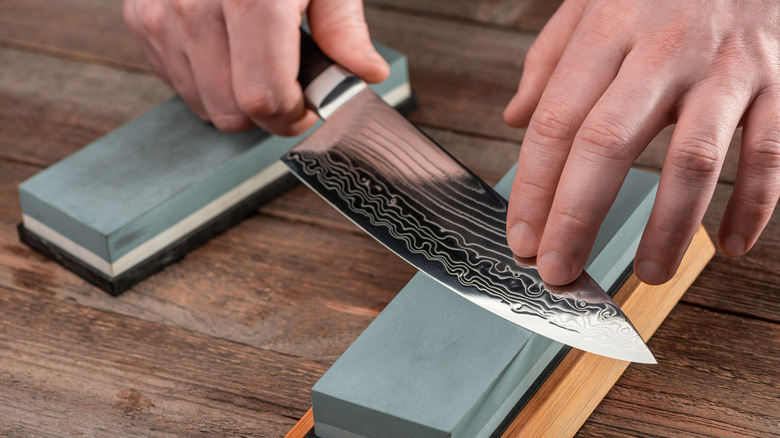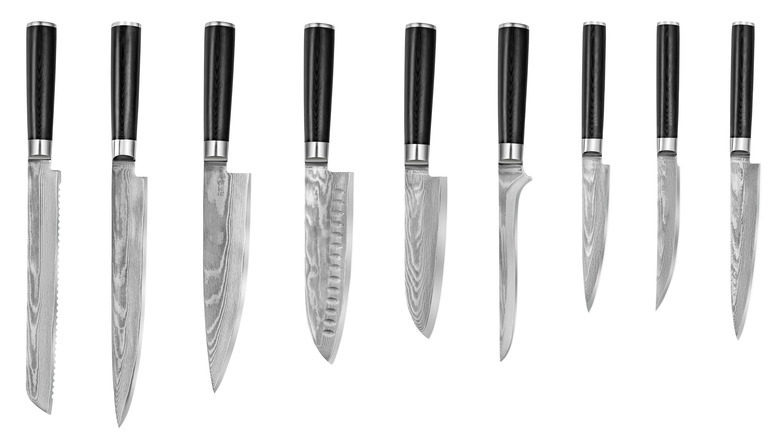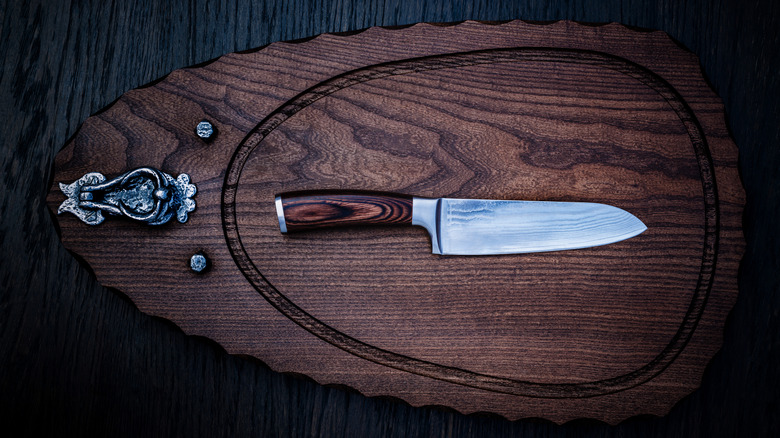Why You Should Add A Damascus Chef Knife To Your Collection
When the time comes to upgrade your knife skills as a chef, the hunt for the perfect blade to add to your collection can be quite daunting. As you begin your journey down the rabbit hole of metals and handle balance, you may stumble across a particular type of blade that is both beautiful and interesting — Damascus steel.
What is this name that has become renowned in kitchens worldwide and where is it from? According to F.N.Sharp, Damascus steel, which was named after the Syrian Capital, can be dated back to 300 B.C. This style of blade-making was first recognized during the 11th-century Crusades when the famed stories of the distinctly sharp edges of the Damascus steel blades wreaked havoc in Western Europe.
The mesmerizing swirl pattern of the metal was the traditional signature of a true Damascus blade. However, the forging method of this "wootz metal" was so complex that the famed recipe was lost in the 1700s, according to House of Knives. Lucky for us, the combination of alloys was rediscovered in the 1990s by J.D Verhooeven (via Engineering Department at Purdue). Thus allowing the recreation of this useful and complex steel.
What makes a Damascus Knife stand out?
A Chef's knife is a carefully chosen dance partner that should withstand many different courses of cuisine. The bond is important and deserves to be found through a thoughtful process of evaluating function and reliability. A Damascus knife is one of the most sought-after Japanese-style chef knives on the market. According to Damas Knives, the modernized way of making Damascus steel combines multiple metal alloys, starting with stainless steel. This gives the go-to kitchen tool a rust-resistant lifespan.
Where other knives are only made with one type of metal, the higher quality elements used in the Damascus blade give it unbeatable strength, durability to withstand a lifetime, and an edge that holds its sharpness. What else could you ask for? The traditional technique behind creating the blade, which is a form of layering the metals, allows the distinct wave-like pattern to appear and gives it the stunning look that visually separates a Damascus knife from all the rest.
To give this blade one more reason to be chosen as your kitchen partner in crime, Gordon Ramsay created a line of these knives in partnership with HexClad. According to Reviewed, Gordan Ramsay and the co-founders of HexClad set out to create their Japanese Damascus steel knives with a vision of perfection — for each type of knife that Ramsay recommends every chef own.
How to maintain and care for your Damascus Knife
To truly invest in your kitchen and the quality of your culinary craft, you must also be prepared to care for the new star of your chopping block. As a Damascus knife comes with a price tag worth its lifetime, there are some tried and true practices to keeping your Damascus blade in tip-top shape. According to KnifeArt.com, there are different methods of maintenance that depend on the metal your blade was crafted with, but there are some basic guidelines to follow.
It is safe to say this grade of chef's knife should stay out of the dishwasher. After hand-washing your blade, dry it gently with a microfiber cloth that will not create any abrasions. If you want to go the extra mile, applying wax to the blade after cleaning it will help keep environmental moisture from impacting the steel. After all, we want to keep our shiny new Damascus knife in its proper state of glory.
It is important to be mindful of where you plan to store your blade. the best way to maintain its longevity is to store it safely in a dry place without any unnecessary moisture. If taken care of properly, this sturdy addition to your kitchen will likely last long enough to be passed on to the next budding chef in your life.


